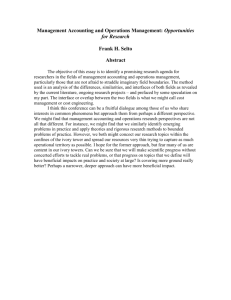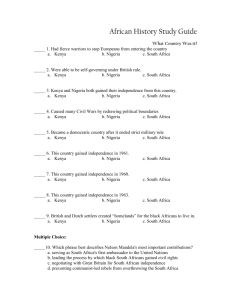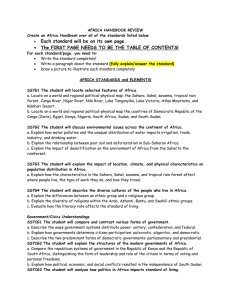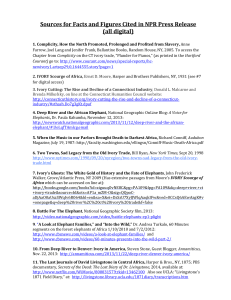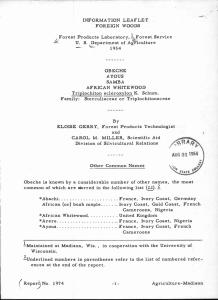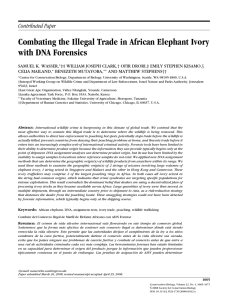africa - Indianola Community Schools
advertisement
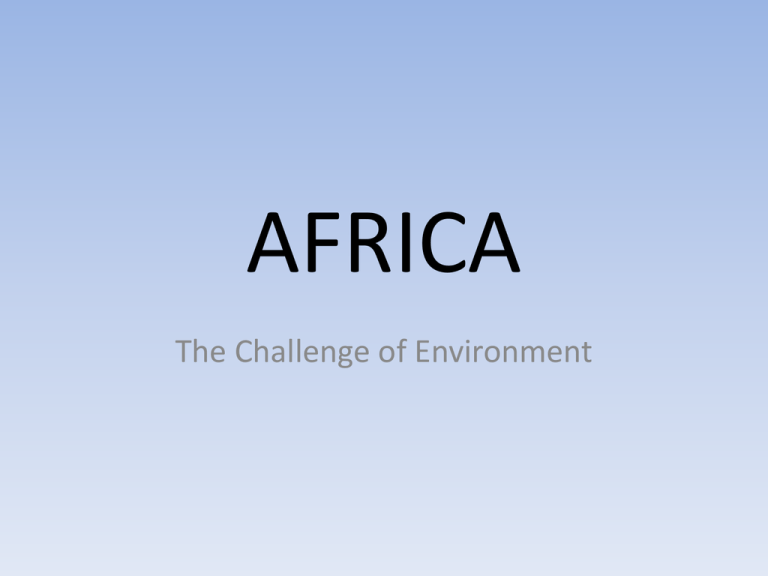
AFRICA The Challenge of Environment As Africa's population numbers soar, the environment is under increasing pressure to provide for people. Here, a Kenyan woman travels great distances over parched land in search of water. The Horn of Africa, where this woman lives, contains 14 million people at risk from drought-induced famine, the United Nations World Food Programme estimates. Ninety percent of those affected live in just two countries: Kenya and Ethiopia. http://www.pbs.org/wnet/africa/photoscope/ Left to rot, a leaking Shell pipeline floods the land in Ogoniland, Nigeria with oil. In 1993, Shell was forced to quickly abandon oil production in Ogoniland after a campaign by Nigerian writer Ken Saro-Wiwa charged the oil giant with widespread pollution. Shell claims that oil fires and leaks occur because it did not have enough time to seal its facilities properly. Oil is a paradox for Nigeria. While the country depends on oil for 90 percent of its exports, little of the profit actually flows back into local communities. A village next to a valuable oil well may have no access to clean water, electricity, roads or healthcare. The problem is compounded by poor environmental controls that have spoiled farmlands and fishing waters. Agriculture is by far Africa's most important economic activity. In Rwanda, where this tea field was photographed, crop cultivation employs about 75 percent of all workers and accounts for 30 percent of exports. But this sea of bounty provides a deceptive image. Much large-scale agriculture is for export and does not go to feeding local populations. While only six percent of Africa's land area is under permanent crops, a whopping 35 percent of Rwandan land is arable. Most Africans rely on firewood as their primary fuel source. When people move onto a stretch of virgin land, trees are often the first things to go. Here, locals in Maputo, Mozambique are running a firewood market, though many Africans simply opt to collect fallen branches from the ground. Together with large-scale logging for export, this puts Africa's forests on a high eco-alert. Quickly harvested, many forests are never replanted, resulting in destruction of habitat and land degradation. Burning like a funeral pyre, a pile of ivory in Nairobi sends a warning to poachers. The message seems to be getting through. In the mid-1980s, when ivory fetched $125 per pound, Kenya lost 85 percent of its elephants to poaching each year. After the worldwide ban on ivory sales went into effect, that number had plummeted to just 50 elephants per year by 1993. Current estimates put Kenya's elephant population at around 30,000. While this is a sharp drop from the 70,000 animals that existed in the mid 1980's, it is believed to be sustainable. The Problem of Clean Water • Read the following BBC news story and answer Questions 3-5 in your packet: • “Africa’s Potential Water Wars”

